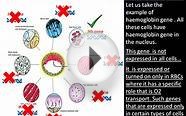
What are luxury genes?
Eppie Lederer and Pauline Phillips were one of the most famous pairs of identical twins in the United States during the 20th century. Born 17 minutes apart, both women became wildly popular syndicated columnists—as Ann Landers and Abigail Van Buren, respectively—and dispensed tart-tongued advice about love and other matters. Photos from their younger days reveal that the two women were uncanny look-alikes, both graced with fashion-model cheekbones and vibrant eyes.
Over the years, ever-changing hairstyles made it easier to tell them apart. But it was their dramatically diverging health, finally, that truly distinguished one from the other. Eppie died of multiple myeloma at age 83, while Pauline lived to be 94 before succumbing to Alzheimer’s disease this year. That may seem surprising—after all, as identical twins they have perfectly matched DNA. But it turns out that twins have rates of “disease discordance”—that is, if one has a medical condition, the other twin typically won’t get it—that are well over 50% for most conditions.
Yet if DNA is not destiny, how is it that genes and environmental influences interact to bring about disease? Part of the answer may come from the burgeoning study of epigenetics. Developmental biologist Conrad Waddington is credited with coining the term in the 1940s, and even today there is disagreement among scientists about how to define it. There is, however, agreement that humans and animals have a chemical infrastructure—an epigenome—that switches genes on and off. (The prefix epi derives from the Greek, meaning “over” or “above.”) Evidence suggests that environment and lifestyle choices can trigger epigenetic modifications, and that could help explain why identical twins end up being not so identical.
Tinkering with gene switches can have a profound effect on how they behave, and labs around the world are now scanning the genome in hopes of identifying epigenetic modifications—sometimes called “marks” or “tags”—that could serve as biomarkers, helping to predict and identify a wide range of conditions. Drug developers, meanwhile, are exploring compounds that may be capable of thwarting epigenetic modifications that cause key genes to become under- or overactive, thereby promoting cancer and other diseases. Several medications that work by altering the epigenome are already in use.
You might also like










